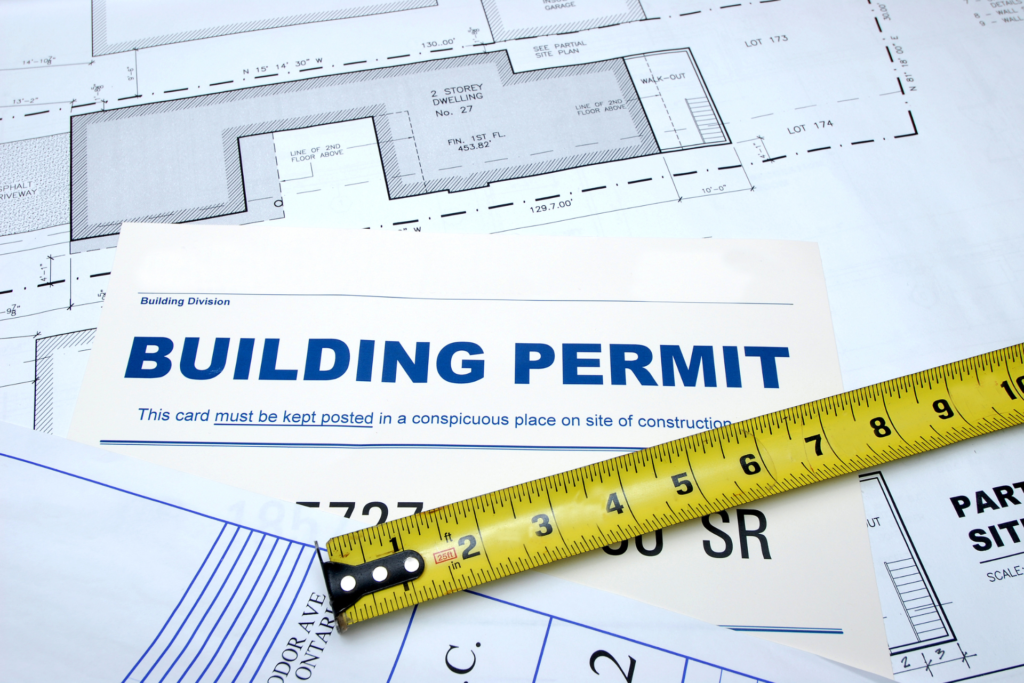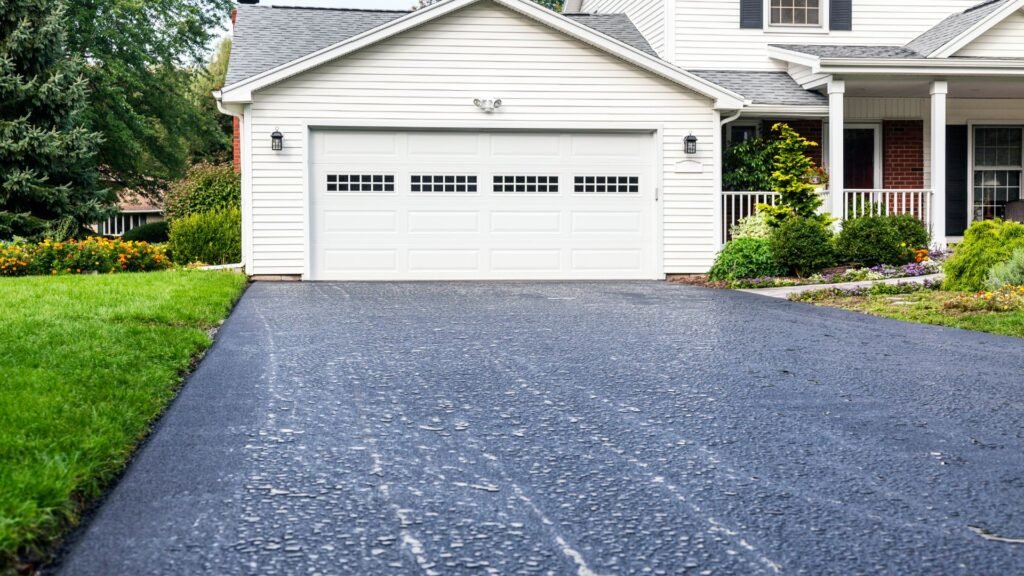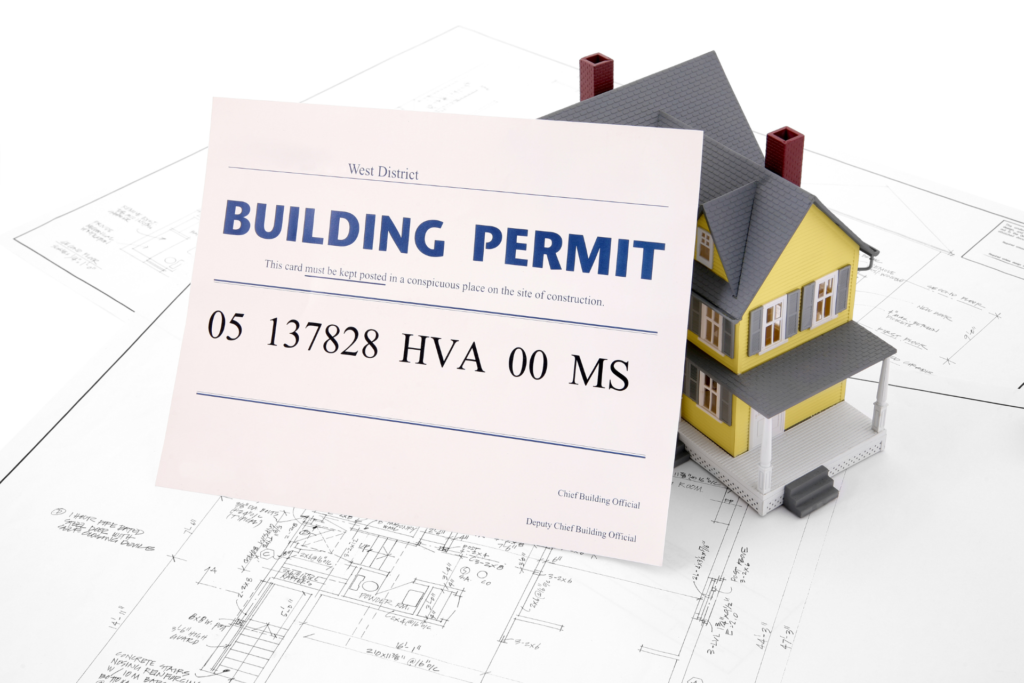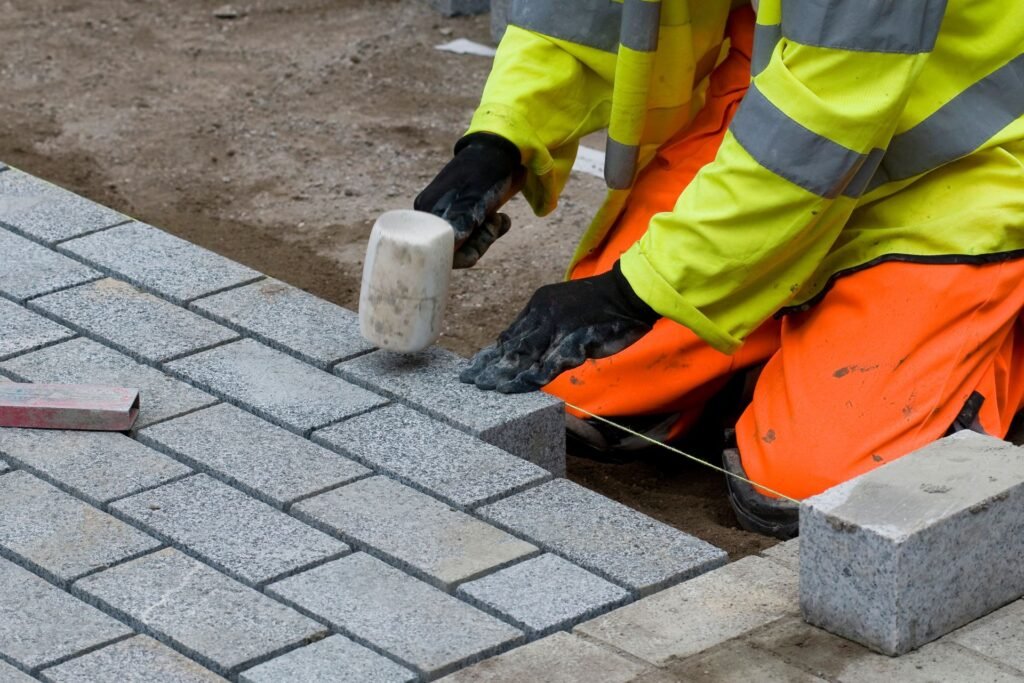Welcome to our comprehensive guide on council rules for driveways in New Zealand, where we break down everything you need to know as a homeowner or property owner looking to build or modify your driveway. Understanding and following your local council’s regulations is essential to ensure your project complies with legal standards, enhances safety, and avoids any potential fines or penalties. In this post, we’ll cover the key rules, application processes, and practical tips to help you navigate driveway regulations smoothly, giving you the confidence to move forward with your project successfully.
In New Zealand, council rules for driveways regulate aspects like width, gradient, materials, and location to ensure safety and compliance with local standards. Homeowners usually need council approval before building or modifying a driveway, especially if it affects public infrastructure like footpaths or roads. Regulations vary by region, so it’s essential to check with your local council for specific guidelines on driveway construction and permits.
Table of Contents
Why Do Driveways In New Zealand Have Council Rules
Driveways in New Zealand are subject to council regulations for several important reasons, all centered around public safety, environmental sustainability, and urban planning. These rules ensure that new developments, as well as modifications to existing properties, align with broader community goals and protect both individual homeowners and the public.
Safety Considerations
One of the primary reasons councils in New Zealand regulate driveways is to ensure public safety. Driveways are access points between private property and public roads, and poorly designed or placed driveways can create hazards for both pedestrians and motorists. For instance, driveways with poor visibility or steep slopes can lead to accidents when vehicles are entering or exiting. Council rules often specify requirements like sightlines, driveway gradients, and surface materials to minimize the risk of accidents. By enforcing these rules, councils help protect homeowners, their visitors, and the public.
Maintaining Public Access
Councils also regulate driveways to maintain the accessibility of public spaces. A driveway connects private property to the road, but it crosses over public land (the footpath or berm). Ensuring that driveways do not obstruct pedestrian access, damage footpaths, or interfere with other public infrastructure like drainage systems is essential. Driveway regulations help maintain a balance between allowing homeowners to have access to their property while ensuring that public walkways remain safe and accessible to everyone.
Environmental Considerations
Environmental sustainability is another key reason for driveway regulations in New Zealand. Improper driveway construction can lead to issues like stormwater runoff, which can cause erosion, flooding, or pollution of nearby waterways. To combat these issues, councils enforce rules that dictate how stormwater must be managed, ensuring it is absorbed into the ground or directed into appropriate drainage systems. Some councils may also require the use of permeable materials for driveways, which allow water to seep into the ground, reducing the strain on stormwater infrastructure and helping to replenish groundwater supplies.
Urban Planning and Neighborhood Aesthetics
Urban planning is critical to creating well-organized, attractive neighborhoods, and driveways play a role in this process. Council rules help ensure that driveways are designed in a way that maintains the visual appeal and uniformity of neighborhoods. They prevent situations where multiple driveways or large vehicle crossings disrupt the aesthetic flow of a street or interfere with the planned use of public spaces. For example, councils may limit the number or width of driveways on a single property to prevent excessive disruption to the streetscape.
Relevance to Homeowners
For homeowners, these rules may seem restrictive at first glance, but they are designed to protect your long-term interests. By adhering to council driveway regulations, you avoid potential legal issues or fines for non-compliance, and you ensure that your property remains safe and accessible. More importantly, following these rules helps prevent costly problems like water damage, drainage issues, or safety hazards in the future.
Additionally, compliance with driveway regulations helps maintain the overall aesthetic and functionality of your neighborhood, which can ultimately protect or even enhance the value of your property. Ensuring that your driveway fits within the council’s guidelines means that your home blends harmoniously with the surrounding environment and contributes to the overall appeal of your area.
Driveways in New Zealand are subject to council rules for good reason. These regulations are in place to ensure safety, maintain public access, protect the environment, and support urban planning efforts. For homeowners, following these rules is crucial in preventing legal and safety issues, while also contributing to the visual appeal and functionality of their neighborhood. Adhering to council driveway guidelines ultimately benefits not just individual homeowners but the entire community.

Overview Of Key Council Regulations For Driveways In NZ
When planning a driveway in New Zealand, it’s essential to understand that regulations can vary based on the local council’s specific rules. While there are some nationwide guidelines, homeowners must be aware of regional differences that may affect the design and construction of their driveways. Below is a breakdown of the key regulations and considerations when constructing or modifying a driveway in New Zealand.
Regional Differences in Driveway Regulations
Each council in New Zealand may have slightly different requirements for driveways, and it’s crucial to consult your local council before starting any driveway project. For example, Auckland Council and Wellington City Council may have specific criteria around driveway design, materials, and placement. These rules ensure that driveways align with both residential needs and public safety concerns. Checking your council’s specific guidelines early in the process can save time, ensure compliance, and avoid costly mistakes.
Basic Rules that Apply Nationwide
While there are variations at the regional level, several fundamental rules apply to most driveway projects across New Zealand. Here are some of the most important.
Driveway Width Requirements
New Zealand councils typically impose minimum and maximum width requirements for residential driveways to ensure safety and functionality. The width of a driveway often depends on the type of vehicle access needed and whether the driveway serves a single dwelling or multiple units.
- Minimum Width: For a standard residential driveway, the minimum width is usually around 2.5 to 3 meters. This ensures that vehicles can safely enter and exit the property without difficulty.
- Maximum Width: Councils may also impose a maximum width, often around 5 to 6 meters, to avoid excessive land use and to maintain the aesthetic appeal of residential areas. Driveways that are too wide can disrupt the visual flow of the street and may interfere with pedestrian pathways.
Driveway Gradients and Slopes
The gradient or slope of a driveway is a critical aspect of its design. A driveway that is too steep can create safety risks for both pedestrians and vehicles, while one that is too flat may not provide adequate drainage.
- Recommended Gradients: For most residential properties, the recommended gradient for driveways is no more than 1:5 (or 20%). This means that for every 5 meters in horizontal distance, the driveway should rise or fall by no more than 1 meter. Steeper driveways may require special considerations, such as surface treatments to prevent skidding.
- Drainage Concerns: Proper drainage is essential to prevent water from pooling on the driveway surface or running off into neighboring properties. Most councils require driveways to have appropriate stormwater drainage systems, such as channels or slopes directing water away from the driveway and into the stormwater system.
Visibility and Traffic Safety
To ensure safe entry and exit from driveways, visibility is a key factor. Driveways must be designed with clear sightlines so that drivers can see approaching traffic and pedestrians. Poor visibility can increase the risk of accidents, particularly in areas with high traffic volumes or close proximity to intersections.
- Setback Requirements: Councils often require driveways to be set back a specific distance from intersections or other traffic hazards. This distance ensures that vehicles entering or exiting the driveway have adequate time and space to merge safely with traffic. For example, a driveway located near a busy intersection may need to be positioned at least 6-9 meters away from the corner to allow for safe vehicle movements.
- Line of Sight: There may also be rules regarding the placement of structures, plants, or fences near the driveway that could obstruct the driver’s view. Keeping a clear line of sight ensures that both drivers and pedestrians are protected.
While there are overarching regulations for driveways in New Zealand, local councils often have their own specific rules. Homeowners and developers should take time to consult with their regional council, such as Auckland Council or Wellington City Council, to ensure compliance with all relevant guidelines. Key considerations like driveway width, gradient, and visibility are universal, but checking local requirements can help avoid potential issues and ensure that the driveway is safe, functional, and in line with community standards. Always prioritize safety and drainage to maintain the usability of your driveway over time.

How To Apply For Driveway Permits And Council Approvals
If you’re planning to build or modify a driveway on your property, it’s important to understand that most local councils require permits and approvals before any work can begin. Here’s a step-by-step guide to help you navigate the process smoothly and avoid potential delays.
Check Your Local Council’s Guidelines
Before diving into the application process, the first step is to visit your local council’s website. Each council has specific regulations regarding driveway construction, materials, and dimensions, so it’s essential to understand what applies to your area.
How to Find the Information
- Go to your local council’s website.
- Look for a section related to “planning” or “permits.”
- Search for driveway-specific guidelines or broader property development regulations.
Most councils provide clear documentation, including application forms, and some even have online portals for permit submissions. If you can’t find the information easily, call or email the council directly for assistance.
Prepare and Submit Your Driveway Plans
Once you’ve familiarized yourself with the guidelines, the next step is to prepare detailed driveway plans for submission. The council will require specific information to assess whether your project complies with local regulations.
What to Include in Your Driveway Plan
- Dimensions: The length, width, and slope of the driveway.
- Materials: Specify the type of materials you’ll use, such as concrete, asphalt, or gravel. Ensure that your chosen materials are acceptable under local guidelines.
- Proximity to Public Footpaths: Include the location of your driveway in relation to public footpaths, roads, or neighboring properties.
- Drainage: Indicate how water runoff will be managed to prevent flooding or environmental issues.
It’s important to ensure that your plans are professionally drafted and all measurements are accurate. If you’re unsure, consider consulting with a licensed contractor or engineer to avoid issues during the approval process.
Consider Environmental Factors
Local councils often assess environmental impacts, such as how the driveway might affect natural water flow or contribute to local flooding. Some councils may require additional environmental assessments if your project is large or near sensitive areas.
Key Environmental Considerations
- Water Runoff: You may need to show that your driveway won’t cause excessive runoff or drainage issues, especially in areas prone to heavy rain.
- Vegetation: If your driveway construction involves removing trees or plants, the council may need to evaluate whether it impacts the local ecosystem.
Make sure to check if your council has specific environmental assessment forms that need to be submitted along with your plans.
Understanding Approval Timelines
Once you’ve submitted your application and plans, it’s important to understand that approval timelines can vary depending on your local council and the complexity of your project.
How Long Does It Take?
- For straightforward projects, the approval process may take anywhere from 2 to 6 weeks.
- More complex applications, particularly those that require environmental assessments or modifications to public infrastructure, can take longer sometimes up to several months.
To avoid unnecessary delays, make sure all your documentation is complete, accurate, and compliant with the guidelines from the start.
Tips for a Smooth Application Process
Applying for a driveway permit doesn’t have to be stressful if you follow these practical tips.
- Double-Check Measurements: Inaccurate dimensions or unclear plans are common causes for application rejections or delays. Make sure your measurements are precise.
- Consult Professionals: Consider working with professionals like surveyors, engineers, or contractors who are familiar with local council requirements. They can help ensure your application is prepared correctly.
- Submit All Documentation: Missing documentation is a frequent cause of application delays. Before submitting, ensure you’ve included all the required forms, assessments, and plans.
- Follow Up: Once your application is submitted, monitor its status regularly. Some councils allow you to track the progress online. If you haven’t heard back within the estimated timeframe, don’t hesitate to follow up with the council to avoid unnecessary waiting periods.
By following these steps, you’ll be better prepared to apply for a driveway permit and council approval, helping your project move forward with fewer complications. Preparation and attention to detail are key to ensuring a smooth and successful application process. Navigating the driveway permit process can seem daunting, but understanding your local council’s requirements, preparing thorough plans, and paying attention to environmental factors will make the process much easier. Remember, a well-prepared application is the best way to ensure a swift and hassle-free approval.

Common Restrictions And Rules To Watch Out For When Installing A Driveway
When planning to install or modify a driveway, it’s important to be aware of several common restrictions and regulations that can affect your project. Whether you’re looking to upgrade your home’s curb appeal or improve access to your property, these rules ensure that your driveway is safe, durable, and compliant with local codes. Let’s break down some of the most common driveway restrictions and rules to watch out for.
Driveway Location Restrictions
The location of your driveway plays a key role in the safety and accessibility of your property. Local municipalities often enforce strict guidelines on where a driveway can be placed. These rules are designed to minimize potential hazards and conflicts with existing infrastructure. Here are a few location-based restrictions you might encounter.
- Proximity to Other Driveways: To reduce traffic conflicts, many cities and towns require a minimum distance between your driveway and adjacent driveways. This is especially important in densely populated areas, where driveways that are too close together can create dangerous situations for drivers entering or exiting properties.
- Pedestrian Crossings: Driveways located near pedestrian crossings or sidewalks need to adhere to specific guidelines to ensure the safety of those on foot. There are often minimum distance requirements from crosswalks to prevent obstructed views and potential accidents.
- Utility Poles and Street Furniture: Utility poles, streetlights, fire hydrants, and other roadside structures also affect where you can place a driveway. Your local regulations will likely dictate how far your driveway must be from these fixtures to prevent damage during construction and ensure safe accessibility.
Checking with your local zoning office or building department will provide clarity on any specific driveway location restrictions in your area.
Material Guidelines for Driveways
Choosing the right material for your driveway isn’t just about aesthetics; it’s also about compliance with local regulations. Many municipalities have guidelines on what materials you can use, as different materials have various environmental impacts. Here are a few common material restrictions:
- Permeable vs. Impermeable Surfaces: In an effort to combat flooding and manage stormwater runoff, many areas encourage or mandate the use of permeable materials. Permeable driveways allow rainwater to seep into the ground, reducing strain on local drainage systems. Examples of permeable materials include gravel, permeable pavers, and certain types of porous concrete. In contrast, impermeable materials, such as traditional asphalt or concrete, can lead to water runoff and may be restricted in certain areas.
- Environmental Impact Considerations: Some regions have sustainability initiatives in place that promote the use of eco-friendly materials. If your area has such programs, you may be required to select materials with a low carbon footprint or that enhance local ecosystems, such as recycled asphalt or green driveways that integrate grass or other vegetation.
Before choosing your driveway material, it’s a good idea to review any local ordinances regarding the types of surfaces allowed and how they contribute to the surrounding environment.
Rules for Shared Driveways
Shared driveways, common in both urban and rural areas, present unique challenges and are often subject to additional rules. These driveways provide access to more than one property, so they require careful consideration of legal, logistical, and neighborly concerns. Here are a few key points to keep in mind.
- Maintenance Responsibilities: One of the biggest issues with shared driveways is determining who is responsible for maintaining and repairing them. Typically, the responsibilities are outlined in a shared driveway agreement, which may specify that costs are split evenly between property owners or allocated based on usage. Without a clear agreement, disputes can arise, so it’s crucial to formalize these arrangements in writing.
- Consent from Neighbors: If you plan to modify or make improvements to a shared driveway, you’ll likely need consent from your neighbors. This includes any changes in material, width, or design that could affect their use of the driveway. In some cases, local laws may require formal consent from all parties involved before any work can begin.
- Easement Agreements: A shared driveway often exists under an easement agreement, which gives one or more property owners the legal right to use a portion of the other owner’s property for access. These agreements are typically recorded in the property’s deed and come with legal obligations that must be respected. Failing to follow the terms of the easement could result in legal action, so it’s vital to fully understand these agreements before moving forward with any changes.
Whether you’re installing a new driveway or modifying an existing one, it’s essential to consider the various restrictions and rules that may apply. From choosing the right location and materials to navigating the complexities of shared driveways, following local guidelines will ensure that your project goes smoothly and avoids unnecessary headaches. Always consult with local authorities and, if needed, a legal professional to make sure your driveway meets all relevant standards.

Compliance With Accessibility And Safety Standards
When designing or modifying driveways, it’s essential to comply with accessibility and safety regulations to protect both pedestrians and vehicle operators. This section highlights key safety and accessibility concerns, including driveway design, pedestrian pathways, and stormwater management.
Vehicle and Pedestrian Safety
One of the primary concerns regarding driveways is ensuring they do not pose hazards to both pedestrians and vehicles. Regulatory bodies impose guidelines to make driveways safer for everyone. Here are some critical factors to consider.
- Curb Ramps: Driveway designs must account for curb ramps, especially in areas with heavy pedestrian traffic. These ramps help to provide an accessible pathway for individuals using wheelchairs, strollers, or other mobility devices. They also help reduce trip hazards for pedestrians crossing the driveway entrance.
- Driveway Boundaries and Markings: It is essential to clearly mark driveway boundaries to ensure that both drivers and pedestrians can easily identify where the driveway begins and ends. Markings not only enhance visibility but also guide vehicle traffic, minimizing the risk of accidents. In high-traffic areas, additional safety measures, like signage or barriers, can further improve safety.
- Clear Sight Lines: Proper driveway design must allow drivers to have unobstructed views of the road and pedestrians. Blocking sightlines with walls, fences, or landscaping can significantly increase the chances of accidents. Regulations often require a clear view at intersections and driveway exits to ensure pedestrians and vehicles can safely navigate around the area.
These regulations collectively aim to reduce the risk of accidents, ensuring that driveways are designed to accommodate both drivers and pedestrians without causing harm.
Drainage and Stormwater Management
Driveways also play a critical role in managing stormwater and preventing flooding. Improperly designed driveways can result in water runoff that affects both the property and neighboring areas, which can lead to serious environmental and infrastructure problems. Municipal councils and local authorities have stringent rules in place to ensure driveways contribute to effective stormwater management.
- Proper Drainage Systems: Local councils often require driveways to be constructed with drainage systems that effectively direct water away from the street, sidewalks, or adjacent properties. Properly sloped driveways are essential in preventing water from pooling or creating hazards on the roadway.
- Preventing Stormwater Runoff: Driveways should be designed to avoid directing stormwater onto the street or neighboring properties, as this can lead to erosion, flooding, and damage to public infrastructure. Regulatory guidelines typically require the installation of permeable materials or drainage channels to mitigate these issues.
By adhering to these stormwater management guidelines, property owners can avoid penalties and ensure their driveways don’t contribute to broader environmental concerns, such as flooding or water pollution.
Ensuring compliance with vehicle and pedestrian safety standards, along with effective drainage management, is not just a matter of meeting regulations. It’s about fostering a safer, more sustainable community. Proper design can significantly reduce hazards, making shared spaces safer for everyone while protecting the environment from the effects of improper water runoff. Property owners must consider these elements carefully to maintain safety, sustainability, and compliance with local laws.

What Happens If You Don’t Follow Council Rules
When it comes to constructing or modifying a driveway, adhering to your local council’s rules is crucial. Failing to comply with these regulations can lead to serious consequences, not only for the homeowner but also for the surrounding community. Below, we’ll break down what could happen if council rules are not followed, including potential fines, penalties, and necessary remedial actions.
Fines and Penalties
One of the most immediate risks of not following council regulations is the possibility of incurring fines or legal penalties. Local councils enforce strict rules on driveway construction to ensure safety, maintain infrastructure standards, and preserve the aesthetic of neighborhoods. When homeowners don’t seek the necessary approvals or fail to build according to the guidelines, they could be slapped with hefty fines.
The amount of the fine can vary depending on the extent of non-compliance and the specific regulations of the council. For example, constructing a driveway without the correct planning permission might result in initial warning notices, followed by monetary penalties that can range from a few hundred to several thousand dollars, depending on the severity of the breach.
In some cases, persistent non-compliance may lead to legal proceedings. A homeowner could be taken to court, where they may be ordered to pay additional costs or rectify the issue within a specific timeframe. This could also negatively impact the resale value of the property, as unresolved legal issues or penalties could deter potential buyers.
Remedial Actions
If you’ve built or modified a driveway without council approval, it’s not just the fines you need to worry about, there’s also the matter of putting things right. When a council discovers non-compliance, they often require homeowners to take corrective action, which could involve.
- Modifying the Driveway: In cases where the construction doesn’t meet council guidelines but is not entirely unacceptable, you may be asked to make adjustments. This could involve altering the slope, drainage, or materials used in the driveway to meet the required standards. While this option may seem less severe, it can still be costly, as you’ll likely need to hire contractors to make the changes.
- Removing the Driveway: In more serious cases, especially where safety concerns or significant breaches are involved, the council may demand the removal of the driveway altogether. This could mean demolishing the existing structure and restoring the area to its previous condition. Not only is this a major inconvenience, but it also comes at the homeowner’s expense costing significantly more than if the project had been approved correctly in the first place.
- Reapplying for Approval: If the project is found to be non-compliant but potentially approvable, homeowners might need to halt construction and submit a fresh application for retrospective planning permission. This process can delay the project and might involve additional fees and the need to adjust plans to meet the council’s requirements.
Failing to follow council rules when constructing or modifying a driveway can lead to significant financial and legal consequences, ranging from fines and penalties to costly remedial actions. The best way to avoid these pitfalls is by consulting your local council before starting any work and ensuring that all necessary approvals are in place. By doing so, you can save yourself from future headaches and expenses, while ensuring your property remains in good standing with local regulations. Ultimately, taking the time to follow the proper procedures will not only protect you from penalties but also contribute to the safety, aesthetics, and overall functionality of your community.

Tips For Hiring Contractors And Navigating The Process
Choosing a Qualified Contractor
Hiring the right contractor is one of the most critical steps when planning any construction project, especially when it comes to building or renovating a driveway. A professional contractor not only brings expertise in construction techniques but also ensures that your project aligns with local council regulations. Here are a few essential tips to help you choose the best contractor for the job.
- Verify Credentials: Always ensure that the contractor is licensed and insured. A licensed contractor has met the necessary legal requirements to perform the job. They should also be covered by insurance, protecting both parties in case of accidents or damages.
- Check Experience with Local Regulations: It’s crucial to hire a contractor who is familiar with the specific regulations of your area, particularly those set by the local council. These can include guidelines on materials, drainage, and setback requirements. A contractor with experience in your locality will understand how to navigate these rules efficiently and can assist you in the application process if necessary.
- Get References and Reviews: Always ask for references or check online reviews. A reputable contractor should be willing to provide contact information for previous clients who can vouch for their work. This step will give you insight into the contractor’s reliability, quality of work, and professionalism.
- Detailed Quote and Timeline: Request a detailed quote that outlines costs for labor, materials, and any additional fees. Ensure that the contractor provides a clear timeline for the project’s completion. This transparency will help you avoid unexpected delays or costs.
Collaboration with the Council
Once you’ve hired a contractor, maintaining open communication with the local council is essential to ensure that your project stays on track and complies with all relevant regulations. Councils often have specific rules regarding driveway construction, and early collaboration can prevent costly mistakes. Here’s how to navigate this part of the process.
- Early Involvement: Before construction begins, engage with your local council to understand the specific requirements for driveway projects. Many councils offer consultation services or can provide information about zoning restrictions, environmental considerations, and any permits needed.
- Permit Applications: Your contractor can often help with the application process for any required permits. However, it’s crucial to stay involved and keep track of the progress. Ensuring that all paperwork is completed accurately and submitted on time will help avoid delays.
- Regular Updates: Throughout the construction process, keep the council informed about the project’s progress, particularly if there are any changes to the original plan. Maintaining transparency with the council can prevent future issues such as fines or required modifications.
- Council Resources: Don’t hesitate to utilize the resources your council provides. Many local councils have websites or hotlines for homeowners needing guidance on specific projects like driveway construction. Use these resources to stay informed and compliant.
Requesting Inspections
Once construction begins, you’ll need to ensure that the work is regularly inspected to meet council standards. Councils typically require inspections at different stages of a project, especially for critical infrastructure like driveways. Here’s how to handle this step effectively.
- Timing of Inspections: Typically, councils require inspections both during and after the construction process. This might include an initial inspection to ensure the site is prepared correctly, and a final inspection to confirm that the completed driveway meets all local codes. Work with your contractor to schedule these inspections at the right times.
- How to Request an Inspection: Most councils offer an online system or a direct phone line to request an inspection. It’s essential to understand the process early on and make sure requests are submitted with enough notice to avoid any project delays.
- What Inspectors Look For: During inspections, the council will evaluate various aspects of the project, such as proper grading, adequate drainage, and compliance with local regulations. Knowing what inspectors will be looking for can help you and your contractor prepare in advance and ensure everything is up to code.
- Post-Construction Approval: After the final inspection, the council will issue an approval or completion certificate if the work meets the required standards. This documentation is crucial, as it certifies that the work is compliant and can also be essential for future property transactions.
By following these tips, you can ensure that your driveway construction project proceeds smoothly, stays within budget, and meets all local regulations. Engaging with both your contractor and the local council early and often will help avoid common pitfalls and ensure that the work is completed to a high standard.

How Council Rules Are Applied In Different NZ Regions
When it comes to driveway regulations across New Zealand, each region has unique challenges and guidelines set by the local councils. These rules ensure safety, accessibility, and functionality based on the geography and population density of each area. Let’s take a closer look at how driveway regulations vary in Auckland, Wellington, and rural areas, addressing the specific challenges each region faces.
Driveway Gradients and Shared Driveways in Dense Urban Areas
Auckland, New Zealand’s largest and most densely populated city, presents unique challenges for driveway design and construction, particularly in its urban areas. As the city continues to grow, more homes are being built on smaller lots, often resulting in shared driveways or steep gradients.
One of the critical aspects that Auckland Council regulates is the driveway gradient. In dense urban areas, driveway slopes must meet specific standards to ensure they are safe for vehicles to navigate. For example, Auckland Council typically limits driveway gradients to a maximum of 1 in 5 (20% slope). This restriction prevents excessive steepness that could make driving hazardous, especially during wet weather.
Shared driveways are another common feature in Auckland, particularly in areas with high-density housing like apartments or townhouses. The council’s rules for shared driveways focus on ensuring that multiple properties can safely and efficiently access their homes without congestion. These driveways must meet width requirements to allow for two-way traffic and ensure that emergency vehicles can enter if necessary.
Auckland’s regulations emphasize safety and accessibility, which is crucial in such a busy, urban environment. The focus on manageable gradients and shared access roads helps keep traffic flowing smoothly while reducing accidents in residential areas.
Overcoming Challenges of Steep Terrain in Driveway Regulations
Wellington, known for its dramatic hills and stunning views, presents a different set of challenges compared to Auckland. The steep terrain in the capital city makes driveway construction more complex, with the council needing to implement specific rules to manage these difficulties.
The main concern for Wellington City Council is ensuring that driveways on steep slopes are safe for use. Driveway gradients in Wellington are usually capped at a maximum of 1 in 6 (approximately 16.7% slope). This is slightly less steep than Auckland’s maximum gradient, reflecting the need for safer conditions on Wellington’s already challenging landscape.
In addition to gradient rules, Wellington’s driveway regulations include requirements for retaining walls and other structural reinforcements. Many homes are built on hillsides, meaning that driveways often need substantial support to prevent erosion or landslides. The council requires homeowners to use engineered retaining solutions that ensure both the stability of the driveway and the safety of the surrounding properties.
Wellington’s regulations also prioritize drainage, which is particularly crucial in areas with steep driveways. Adequate drainage systems must be installed to prevent water runoff from damaging the road or nearby properties during heavy rainfall, a common occurrence in the region. This attention to detail ensures that even with the city’s difficult geography, driveways remain functional and safe year-round.
Driveway Regulations for Longer, More Complex Access Roads
Rural areas in New Zealand, while less densely populated, have their own specific driveway challenges. The vast expanses of land, combined with longer distances between properties and public roads, often result in more complex driveway designs. In these areas, local councils focus on ensuring that access is both practical and safe, especially for emergency services and heavy vehicles.
One of the key considerations in rural driveway regulations is the length of the driveway. In rural settings, driveways can stretch for hundreds of meters, particularly for homes located far from main roads. These longer driveways require more detailed planning to ensure they are wide enough to accommodate large vehicles, including fire trucks, ambulances, and delivery vans. Many councils require rural driveways to have passing bays every few hundred meters to allow vehicles to safely pass each other.
In addition to length, the surface material used for rural driveways is also a significant consideration. Gravel or unsealed driveways are common in rural areas, but councils may impose specific requirements for maintaining these surfaces to prevent erosion or damage. Proper maintenance is essential, especially in regions prone to heavy rainfall, as poorly maintained rural driveways can quickly become impassable.
Furthermore, rural driveway regulations often focus on turnaround areas. These are essential for ensuring that larger vehicles, such as farm machinery or emergency services, can navigate and exit properties without difficulty. Turnaround areas must be spacious enough to accommodate the maneuvering of these vehicles, which is particularly important when the property is located far from the main road. The isolation and varying terrain in rural New Zealand require councils to adopt flexible regulations that balance accessibility with the unique needs of rural landowners.
Each of these regions Auckland, Wellington, and rural areas highlights the diversity of driveway regulations across New Zealand. Whether it’s managing steep gradients in Wellington or ensuring safe shared access in Auckland, local councils tailor their rules to address the specific geographical and infrastructural challenges present in each area. This ensures that driveways, regardless of their location, are designed to be safe, functional, and suited to their environment.

FAQs: About Council Rules Driveways NZ
Do I need council approval to build a new driveway in New Zealand?
Yes, in most cases, you will need council approval to build a new driveway, especially if it involves connecting to a public road or crossing over council-owned land such as footpaths. The process generally involves submitting a driveway plan, which must comply with your local council’s regulations regarding safety, environmental impact, and design standards.
How wide can my driveway be in New Zealand?
The width of a driveway in New Zealand typically ranges between 2.5 to 3.5 meters for residential properties, though this can vary depending on local council rules. It’s essential to check with your local council, as there may be specific requirements based on the type of road you’re connecting to or the layout of your property.
Are there any restrictions on the gradient of a driveway?
Yes, there are regulations concerning the gradient (or slope) of driveways to ensure they are safe for vehicle access and to manage water runoff. The gradient should not be too steep, and in urban areas, councils often specify a maximum gradient of 1:5 (20%). Rural areas may allow steeper driveways, but it’s always best to check with your local council for their specific guidelines.
Can I modify my existing driveway without council approval?
Modifying an existing driveway, such as widening it or changing its surface material, usually requires council approval. Any alterations that affect the footpath, stormwater drainage, or traffic flow will need to be reviewed by the local council to ensure they meet current regulations.
What materials are allowed for driveways in New Zealand?
While councils in New Zealand typically allow a range of materials for driveway construction, such as concrete, asphalt, gravel, and paving stones, they may have specific rules about which materials can be used based on drainage and environmental concerns. Permeable surfaces, which allow water to seep through, are often preferred to reduce stormwater runoff.
What happens if I build or modify a driveway without council consent?
Building or modifying a driveway without the necessary council consent can result in penalties, fines, and potentially having to remove or alter the driveway at your own expense. Non-compliance with council regulations can also lead to safety issues, such as poor visibility for vehicles, improper drainage, and even damage to public infrastructure.
How do I apply for a driveway permit from my local council?
The application process for a driveway permit varies by region, but generally involves submitting a plan of your driveway to the local council, including details such as its dimensions, materials, and proximity to any public infrastructure (footpaths, roads, etc.). You may also need to provide environmental impact assessments or consult a professional to ensure the design complies with local regulations. The local council’s website usually provides detailed steps and forms for this process.
Can I share a driveway with my neighbor, and what are the rules around this?
Yes, shared driveways are common in both urban and rural areas in New Zealand. However, there are specific rules governing shared driveways, particularly around maintenance responsibilities, access rights, and how the space is divided. It’s crucial to have a legal agreement in place between neighbors, and the driveway must comply with council regulations to ensure it’s safe and accessible for all users.
Are there specific environmental rules related to driveway construction?
Yes, environmental considerations play a significant role in driveway construction regulations. Councils often require that driveways have proper drainage systems to manage stormwater and prevent runoff from flowing onto roads or neighboring properties. Some areas may also restrict impermeable surfaces, encouraging homeowners to use materials that allow water to soak into the ground.
Can I appeal a council decision if my driveway plan is rejected?
Yes, if your driveway plan is rejected by the council, you can typically appeal the decision or submit a revised plan. It’s a good idea to communicate with the council and understand the specific reasons for the rejection, as this will help you make the necessary adjustments to meet their guidelines. In some cases, hiring a professional (such as an engineer or a planner) can help improve the chances of approval on a resubmitted plan.
Conclusion
When it comes to driveway construction or alterations in New Zealand, it’s crucial to keep a few key points in mind. First and foremost, proper planning is essential. Whether you’re creating a new driveway or upgrading an existing one, having a clear understanding of your local council’s rules and regulations is vital. Applying for the necessary permits is a critical step that shouldn’t be overlooked, as failure to do so can lead to fines, project delays, or even the need to remove any non-compliant work. Working with professionals, such as driveway contractors or engineers, can make the entire process smoother by ensuring your project meets the required standards and complies with council guidelines. Every council may have its own specific rules, so it’s important to check in with your local authority before beginning any driveway-related work. This simple action can save you from costly penalties and ensure your project proceeds without any unexpected hurdles. In short, taking the time to plan, apply for permits, and consult with the right professionals will help your driveway project run smoothly, keeping you compliant with the law and avoiding any unnecessary headaches.
About the Author:
Mike Veail is a recognized digital marketing expert with over 6 years of experience in helping tradespeople and small businesses thrive online. A former quantity surveyor, Mike combines deep industry knowledge with hands-on expertise in SEO and Google Ads. His marketing strategies are tailored to the specific needs of the trades sector, helping businesses increase visibility and generate more leads through proven, ethical methods.
Mike has successfully partnered with numerous companies, establishing a track record of delivering measurable results. His work has been featured across various platforms that showcase his expertise in lead generation and online marketing for the trades sector.
Learn more about Mike's experience and services at https://theleadguy.online or follow him on social media:











